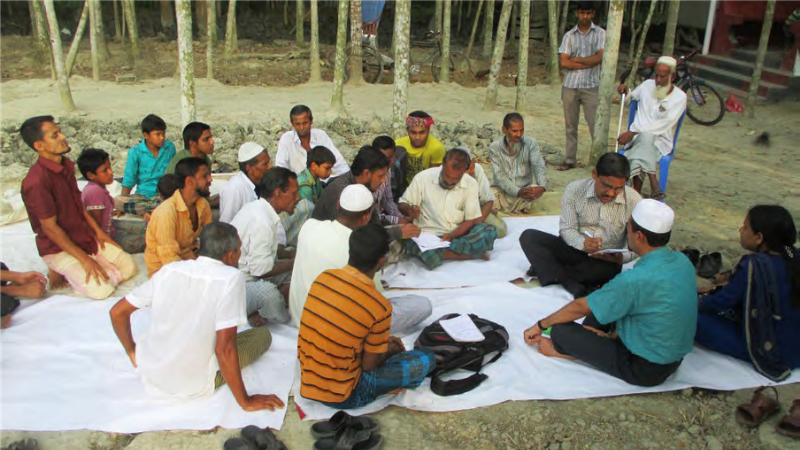by WorldFish – CGIAR
Description
In the Jhalakathi and Pirojpur districts of Bangladesh, the integrated rice field fisheries that operate within the seasonally inundated floodplains are vital for employment and food security for most of the rural population.
However, salinity intrusion, increasingly erratic rainfall, intensifying rice production and unregulated fishing are interacting drivers, reducing people’s ability to fish, harvest rice and grow crops.
Climate-driven stressors, and other environmental or social shocks, operate at multiple scales. Building generic adaptive capacity to a single threat, or building generic adaptive capacity, may not translate into sufficient capacity to shocks a community might experience. For example, salinity intrusion — a phenomenon caused by increased tidal penetration, higher temperatures and sea-level rise — threatens food production in rice field fisheries and in coastal deltas more broadly.
In 2017, WorldFish and partners tested the effectiveness of cement rings as artificial microhabitats that provide fish with a deep-water shelter. This small deep-water environment protects fish when rice fields start to dry up, the remaining water increases in temperature and levels of dissolved oxygen decrease, creating an unfavourable environment for fish.
At the end of the monsoon season, smaller fish remaining in the rings can be caught and cultured in homestead ponds in preparation for the next dry period — a time when many farmers struggle to earn an income because their crop yields are diminished. Excess fish from the homestead ponds can then be sold, providing farmers with a supplemental income, a secondary livelihood and new flexibility to change livelihood strategies. Even if severe flooding ruins the rice crops, farmers can still catch nutritious fish for income or food.
Results
By ensuring that fish can survive in the rice fields year-round, the cement rings help maintain fish biodiversity, and enhance and stabilize fish productivity for food security. Early results show that this very simple household asset can lead to an increase in both fish biodiversity and fish biomass, demonstrating the technology’s promise for reversing the observed decline of indigenous fish populations.
The adaptive capacity built from fish rings may not be sufficient to overcome all the effects of salinity intrusion or the cumulative impacts of salinity, temperature and extreme weather events. This reinforces the multi-scalar nature of shocks and adaptive capacity discussed in this framework.
Climate smartness*
This practice is addressing two important Climate-Smart Agriculture (CSA) pillars: adaptation and productivity to increase food security and income. The improved management of rice crop for increasing fish production generates benefits to farmers even when severe flooding occurs, which clearly addresses the increase of resilience to climate variability regarding food security. However, capacity building for farmers in understanding climate and its relations with agricultural activities could enhance adaptive capacity to climate change and variability. It would be recommended to assess how the practice
might be contributing to mitigation pillar, considering additional crop management options that might reduce input intensity in rice and therefore, in fish production.
For more information about CSA, in a study of CIAT and World Bank (2017a), it is possible to identify several practices for Bangladesh evaluated around 8 key criteria: Water, Carbon, Nitrogen, Energy, Knowledge/Info risk, Yield, Income and Soil.
*This is done in the framework of climate-smart agriculture (CSA) approach. Climate-smartness in agriculture means understanding impacts of climate change and variability along with the agricultural activity, which includes the planning of what crop to plant, when to plant, what variety to plant and what type of management practices are needed to reduce the impact on the environment (e.g. emissions reduction), maintain or increase productivity (e.g. yields) while increasing resilience and improving livelihoods.


